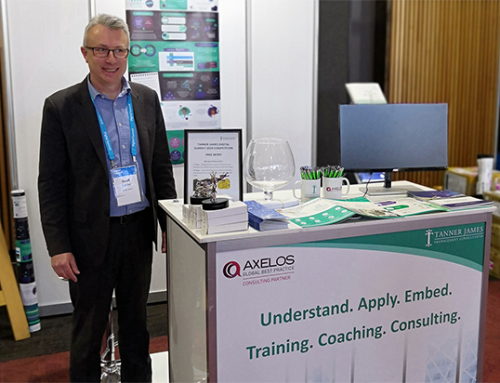Last month we published the first part in our series covering the five principles of AgileSHIFT, starting with “Tailor your Approach”. If you’d like to catch up on that post (and also have a brief introduction to AXELOS’s latest best practice guidance), you can do so by clicking here.
This month’s post explores the next principle: “Challenge the Status Quo”. It may sound simple but testing this principle in an organisation is a fantastic way of gauging the true level of acceptance of an agile mind-set. An organisation’s reaction to this principle gives a good indication as to where it is on its journey towards being truly agile. Resistance to staff being empowered to challenge the status quo is the antithesis of an agile organisation while those that embrace this principle embody the mind-set.
Everyone within an organisation, regardless of their position must be empowered to challenge;
- The way they work
- Decisions
- Processes used
- Tools and techniques adopted
- Each other.
The perception and reaction to the concept of challenging is crucial to an agile mind-set.
In an agile organisation where there is trust and rapport between staff, challenging each other is a healthy part of the culture as everyone works towards common goals. Challenging equates to a constructive discussion about the improvement of any area of the organisation. Individuals are always ready to ask “Why?” and always ready to be asked “Why?” themselves. This approach encourages characteristics of what we would call a modern organisation;
- Transparency and openness
- Collaboration
- Trust
- Respect
- Less hierarchical.
In a more traditional organisation, this type of questioning might be construed as someone not respecting the existing order (or simply “being difficult”), with little distinction between “challenging” and “blaming” and generally creating a negative atmosphere.
There are also strong links here to organisations which have a more traditional hierarchical structure, promoting a command and control approach. While hierarchy isn’t necessarily inherently bad, for an organisation wanting to embrace agility, a flatter structure (or even flatter culture) is important. Challenging the current status as outlined above enables staff to challenge those above them in an organisations structure in an open and productive manner, ultimately benefitting the organisation. Another core principle to agile thinking is that those closest to the work probably have the best idea how to deliver it, so any feedback and suggestions by those lower down the chain (and in all likelihood closer to the work) can only add value. Listening to suggestions for improvement doesn’t necessarily mean that they are all implemented but not listening could mean the organisation is missing an opportunity for improvement.
So how do you go about testing this principle?
A good place to start is to track how often people do ask why or challenge something they do not fully understand. As things progress, capture and celebrate specific times, where someone has challenged something, which has led to an improvement. It might not have to be a huge change, but it can start to demonstrate the importance in challenging the status quo and the value it can bring.
I hope you’ve found the latest post in this series useful. We’ll publish the next post in a couple of a weeks’ time, so stay tuned.






Leave A Comment